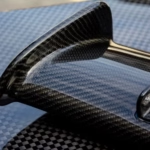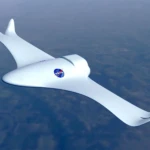Select Stability and Power: Top Dual-CNC Machine Suppliers Require Manufacturing
In a world where heavy-duty, oversized or unusually precise components are processed, standard vertical machining centers (VMCs) often hit walls – figuratively, sometimes literally. When rigidity, stability, extended travel and high material removal rates are not negotiable, Dual-column CNC machine (also often called Gantry Factory or Bridge Mill) as a powerful solution to enter the store floor. Connected to two reliable columns with its signature bridge-like structure, these machines provide unparalleled stability with minimal deflection during aggressive machining operations on large castings, molds, aerospace components, energy parts and complex tools.
Choosing the right dual-column CNC machine supplier is crucial. This is a major capital investment, and the performance of the machine will directly affect your production capacity, parts quality, and ultimately affect your bottom line. Let’s dive into the main players known for delivering top-tier dual-column machining solutions:
Understanding the advantages of double columns: core attributes
Before exploring suppliers, you must understand what makes these machines unique:
- Excellent rigidity and stability: The closed design significantly reduces vibration and deflection under heavy cutting loads and is critical to maintaining most of the dimensional accuracy.
- Large Work Envelope: Designed specifically for machining large components that are not suitable for traditional VMCs. The table can hold parts weighing dozens or even hundreds of tons.
- High power and torque: When processing strong materials such as titanium, inconel or large steel blocks, a powerful spindle capable of high material removal (MRR).
- Long axis travel (especially the X-axis): The bridge design achieves very long X-axis strokes, which are ideal for machining long parts such as frame tracks, turbines or pressure molds.
- Complex accommodation: The open nature under the bridge allows for large fixtures, rotary tables (index or full profiles), and overhead load/unloading systems.
Key criteria when choosing a supplier
In addition to brand reputation, consider these factors specific to dual-column machines:
- Structural integrity and build quality: Carefully inspect the quality of the foundation casting, column design and materials used. For final stability, granite composites or heat-stable castings are generally preferred.
- Accuracy specifications: Understand the positioning accuracy, repeatability (ISO 230-2) and geometric tolerances (straightness, squareness, flatness) that can be achieved throughout the working envelope. Find a supplier that provides comprehensive test reports.
- Thermal compensation capacity: Complex thermal growth compensation systems are critical to maintaining accuracy through temperature changes in long processing cycles common to large mechanisms.
- Spindle power and torque curve: Ensure that the available spindle power and torque are consistent with your typical material removal requirements and workpiece materials.
- Control system and motion control: High-performance CNC controls (e.g., Siemens 840D, Heidenhain TNC, Fanuc 30i/31i/32i series) have advanced algorithms for smooth interpolation and vibration damping are standard on advanced machines.
- Services and Support: Due to the critical role and complexity of the machine, local technical expertise, spare parts availability and responsive service are crucial. Ask about preventive maintenance plans.
- Options and flexibility: Consider requirements such as high-pressure coolant passing through the spindle, chip conveyor capacity, tool magazine size, integration of the rotating shaft (A/C/B heads of the 5 axes within the bridge), and automation interface.
The leader in dual-column CNC manufacturing
The precise power of Europe:
- Soralecus (part of the Danobat Group in Spain): It is widely regarded as the global leader in large-scale milling technology. Soraluce specializes in high power and highly accurate double column milling, boredom and turn centers. Features such as its unique DAS (Dynamic Active Stabilizer) can actively anti-vibrate, with excellent surface surface effect and the accuracy of a long pocket or long tool. Known for tailor-made solutions in aerospace, energy, molds and molds.
- Waldrich Coburg (Germany): Represents the pinnacle of German engineering for large-scale machine tools, especially surface grinding and milling machines. Their double column milling centers are synonymous with uncompromising rigidity, ring-driven technology for maximum torque at low speeds and ultra-professional water-static guides. These applications are very important to involve highly demanding applications involving hardened steel, turbine components and highly accurate parts with a large number of precision.
- Parma (part of Italy – Breton Group): The main force creates a wide range of machining centers, including powerful double column mills, boring mills and milling centers. PAMA emphasizes high stiffness, efficiency and advanced automation integration. A powerful presence in general processing, energy, construction machinery and aerospace sectors.
Japanese and Korean elastic masters:
- Toshiba Machine (Japan): Toshiba’s BA-S series dual-column machining center is known for its extraordinary thermal stability, rigid lightweight construction and high acceleration/deceleration capabilities. Their "Hot Friendly Concept" Minimize thermal deformation while its Meehanite castings ensure stability. Excellent accuracy and finish potential.
- Read (Japan): Although known for lathes and VMCs, Okuma offers powerful and well-designed dual-column solutions such as the MCR series. Known for thermally friendly concepts, rigid structures (columns, cross rails, spindle heads), and integration with user-friendly OSP control platforms. Suitable for store positioning that requires reliable high-power processing in the Okuma ecosystem.
- Doosan Machine Tool (Korea-DN Solution): Doosan offers a range of competitively priced dual-column machining centers (DCM series), providing a strong balance between rigidity, power and value. They feature heavy-duty castings, high-torque spindles, automatic head changers (on some models), and greater working ability. Popular choices for heavy industry, marine components and general large-scale machining. Reliable global support network.
- Strong Chinese competitors:
- SMTCL (Shenyang Machine Tool Group): As one of the world’s largest machine tool manufacturers, SMTCL offers a wide portfolio, including numerous series of double-row machining centers at various price points. They focus on robustness and core functionality. Although they are likely to lag in absolute peak specifications compared to top players, they represent important value for projects with high capacity budgets and tolerances within their range.
- Qingdao Haijing Machinery (HNJMT): Another major Chinese manufacturer specializing in large-scale milling and boring machines. A huge rigid and mobile gantry design is built on its double columns, emphasizing heavy-duty cutting capabilities and customization for specific industry needs. Attractive to obtain cost-effective solutions worldwide.
Integrated complex machining: the needs of professional partners
Although dual-column machines perform well in handling large major structures and high MRR tasks, complex geometries often require 5-axis capabilities at the same time. This is with Professional precision machining service provider like Great Become priceless.
Greglime: Distinguish by its fleet Advanced five-axis CNC machining center and deep expertise. For manufacturers dealing with large components with complex features – complex profiles, composite angles, internal channels, or demanding finishing requirements – Greatlight fills a critical niche. They have the ability to undertake complexes Subcomponents or Key Features Large parts after initial double-row machining, or precise components that require multi-axis access from the beginning. Their ability to provide high-precision metal parts, provide comprehensive aftertreatment (heat treatment, coating, surface treatment) and provide fast custom solutions makes them a strategic partner. In general, complex aerospace structures, high-performance molds or complex energy components benefit significantly from the combined power of large double-column machining, for clearing stock and fluid shapes, followed by the accuracy and flexibility of dedicated high-end five-axis machining for detailed features and tight tolerances. Greglight stance is ready to effectively address these challenges and support with material expertise and commitment to competitive prices.
in conclusion
Choosing an ideal dual-column CNC machine supplier requires careful analysis of your specific application requirements, tolerance requirements, budget constraints and required service levels. European leaders (Soraluce, Waldrich Coburg, PAMA) usually provide cutting-edge performance and ultra-accurate performance, but at advanced investment levels. Asian powerhouses (Toshiba, Okuma, Doosan) offer excellent performance, reliability and a strong value proposition. Chinese manufacturers (SMTCL, HNJMT) have high capacity and rigidity at attractive entry points.
remember, "The best" A supplier is the supplier whose machines are exactly consistent with your technical requirements and operational scales. Consider long-term service factors such as service support and potential future processing requirements. For very complex components, tight tolerances or complex multi-axis work is required in large projects, working with professional five-axis experts Great Supplement the function of large double-row CNC machining to ensure that the final part meets the highest standards. Comprehensive due diligence, including factory access and reference inspection, is essential for successful investment in this cornerstone workshop technology.
FAQ: Dual-column CNC machine
Q1: What are the main applications of double-row (gantry) CNC machines?
one: These machines do well in machining large, heavy and complex parts, requiring high stiffness and precision. Common industries include: aerospace (wing skin, frame), energy (turbine case, hydropower components), molds and molds (large automotive panels), heavy equipment (frames, gearboxes), tracks and ships (engine blocks, large gears) and general large fabricated parts processing.
Q2: How accurate is a dual-column CNC computer compared to a smaller VMC?
one: High-quality dual-column machines, especially precise models from top suppliers, are designed to achieve accuracy in the form of comparable or exceeding large VMCs. However, achieving microscopic accuracy on extreme long-distance travel is challenging. Strict specifications (e.g., positioning accuracy, direct propagation per meter) are key evaluation points. The high-end models combine complex thermal compensation and advanced metering tools to maintain consistent accuracy in large workloads.
Question 3: I need to machining complex 5-axis functions on large parts. What choice do I have?
one: You have two main ways:
- Integrated 5-axis head on double columns: Top suppliers offer dual column machines with integrated A/C or B-axis milling heads. This allows for 5-axis profiles on large platforms, but involves significant investment and can make access to deep cavity difficult.
- Hybrid manufacturing: The main structure of the machine on the double column machine, large surface and high strand area. The smaller components that require multi-axis functionality are then transferred to a dedicated high-precision 5-axis machining center. The company likes it Great Focusing on this secondary high-complexity precision work is usually higher in tolerances than a single large machine head that can achieve complex functions.
Q4: Are dual-pillar machines much more expensive than large VMCs?
one: Yes, usually, they represent quite high capital expenditures. This is due to their huge size, heavier castings, longer linear guides/nuts, larger motors and overall complexity. But for applications that require their unique rigidity, work envelopes and power, they are Cost-effective Compared to alternatives or trying an inappropriate machine, solution.
Q5: What is it "Thermal compensation" Functions, why are they important?
one: Large machines undergo thermal expansion/contraction during prolonged operation, as the spindle, motor and friction unevenly heat different parts of the structure. This thermal growth can lead to mislocalization. Complex thermal compensation systems (usually using multiple embedded temperature sensors and complex software models) continuously monitor heat distribution and dynamically adjust the machine’s position commands to offset these distortions, maintaining accuracy over long machining cycles – a key feature of these large machines.
Question 6: How to choose between a fixed bridge and a dual-column design that is easy to move?
one: Both have rigid advantages over C-type machines.
- Fixed bridge/mobile station (traditional): The workpiece moves on a large table under the fixed bridge. Provides maximum stiffness for tool deflection. A very strong and precise floor foundation is required. Perfect for extremely heavy workpieces that can be installed on a table. X-axis travel is limited by table strokes. Load/unload complexity with large parts can be a factor.
- Mobile gantry: The bridge structure itself moves along the long axis (x). The table (usually fixed or short Y-axis) remains fixed. This design allows X-axis travel, can exceed the footprint of the physical machine, and simplifies the setup/loading of large workpieces directly on the bed. The overall weight and inertia may be higher than the mobile stations of equivalent working envelopes and require a powerful drive. The basic requirements may not be stricter than mobile stations. The accuracy of extreme travel requires careful verification.
Question 7: Why would I choose a professional 5-axis partner like Greatlight instead of handling everything on a large double-post machine?
one: While the integrated 5-axis head is powerful, dedicated high-end 5-axis machining centers, e.g. Great Often offer unique advantages for complex work:
- Excellent accuracy and accuracy: Designed for micro-tolerances on complex features.
- Shorter tool length and higher spindle speed: A larger head allows for better access to the deep cavity and tighter internal geometry.
- Optimized rigidity and dynamics: Tailored for high-precision cutting using smaller tools for better finishes.
- Expertise: Companies like Greatlight specialize in complex programming, fixed and multi-axis processes.
For projects that require large scale and Extremely precise complexity, combining the core structure on a large double column with the post-complex function machining of professional partners is often the best technical and economic solution.

















